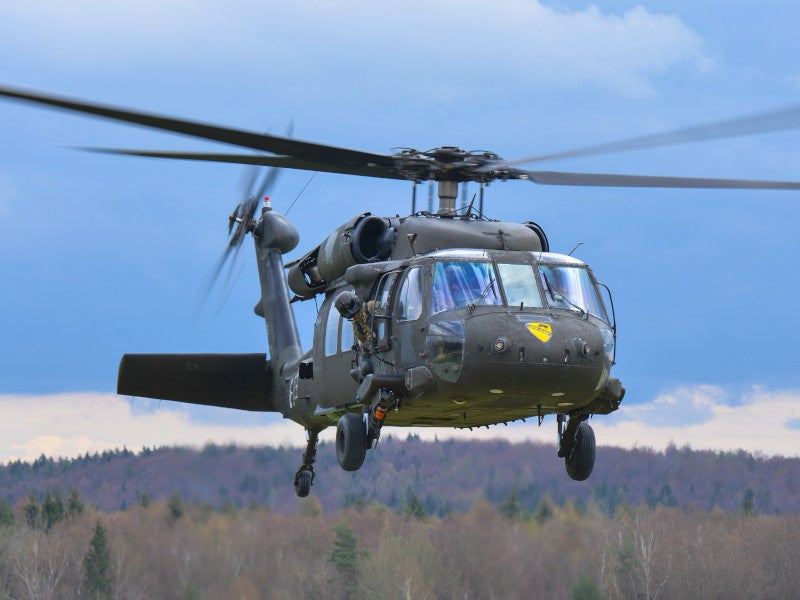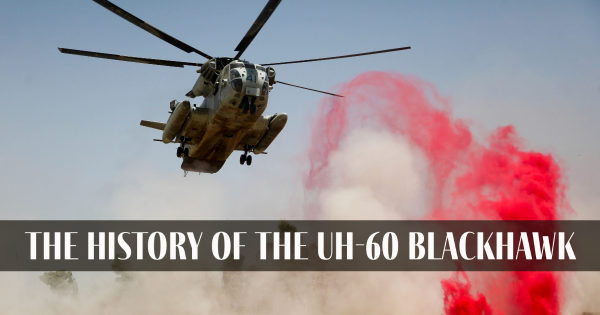Attaining Quality: Secret Techniques for UH 60 Helicopter Maintenance
Attaining Quality: Secret Techniques for UH 60 Helicopter Maintenance
Blog Article
Recognizing the Mechanics and Engineering Behind Uh 60 Helicopters
The UH-60 helicopter, typically recognized as the Black Hawk, stands as a pinnacle of contemporary rotorcraft modern technology, embodying a mix of robust engineering and detailed mechanics. From its creation to its existing iterations, the advancement of this aircraft showcases a combination of advancement and usefulness. As we peel back the layers of the UH-60's design, a world of complex systems and meticulous engineering comes to light. Comprehending the auto mechanics and design behind this functional aircraft unveils a realm where accuracy meets power, and where each element plays a critical duty in achieving flight.
Background of UH-60 Helicopters
The history of UH-60 helicopters traces back to the late 1970s when the United States Army sought a versatile and innovative utility helicopter to replace its aging fleet. In response to this need, the Sikorsky Airplane Company established the UH-60 Black Hawk helicopter. Introduced in 1979, the UH-60 rapidly became a staple in army procedures due to its impressive capacities.
The UH-60 was made to stand out in a variety of goals, including troop transportation, medical evacuation, digital warfare, and special operations. Its capacity to adapt to various functions made it an important possession to the U.S. uh 60. Military and other military pressures all over the world
Over the years, the UH-60 platform has actually gone through numerous upgrades and variations to enhance its efficiency and equal advancing objective needs. These helicopters have seen considerable solution in conflicts such as the Gulf Battle, Afghanistan, and Iraq, showcasing their reliability and convenience in diverse functional settings. The UH-60's rich background is a testament to its long-lasting legacy as a top energy helicopter.

Engine and Power Systems
Utilizing advanced propulsion modern technology, UH-60 helicopters are equipped with advanced engine and power systems to make certain optimum efficiency and dependability in a series of functional circumstances. The UH-60, frequently called the Black Hawk, is powered by 2 General Electric T700-GE-701D engines, each with the ability of providing up to 1,940 shaft horse power. These turboshaft engines offer the needed thrust for the helicopter to execute its missions efficiently, including army transportation, clinical evacuation, and combat assistance.

Rotor System and The Rules Of Aerodynamics
Just how do the blades system and the rules of aerodynamics of UH-60 helicopters contribute to their operational performance and trip abilities? The rotor system of the UH-60 helicopter plays an important role in supplying lift and propulsion.
The rules of aerodynamics likewise play a key duty in the efficiency of UH-60 helicopters. The streamlined fuselage and rotor blade layout minimize drag, enabling the helicopter to achieve greater rates and far better fuel efficiency. The wind resistant style of the UH-60 also adds to its capacity to operate in diverse environmental problems, including warm temperature levels and high altitudes.
Avionics and Trip Control Solution

In its elaborate sychronisation with the blades system and aerodynamics of UH-60 helicopters, the avionics and trip control systems develop an essential network of modern technologies forming the aircraft's functional capabilities. Avionics incorporate the electronic systems made use of for communication, navigating, and keeping an eye on article source various airplane features. In the UH-60, these systems include digital displays, communication radios, general practitioner navigation, climate radar, and autopilot systems. These avionics systems offer important information to the pilots, improving situational recognition and making sure safe and effective operation of the helicopter.
The trip control systems of the UH-60 are responsible for translating the pilot's inputs into the proper changes to the blades system, guaranteeing secure flight and maneuverability. These systems contain hydraulic actuators, servos, and computers that collaborate to regulate the tail and primary blades, in addition to various other trip control surface areas. look these up By precisely managing the helicopter's flight dynamics, these systems allow pilots to do a vast array of objectives, from transport and search-and-rescue to deal with procedures, with precision and confidence.
Function and Applications in Aeronautics
The duty and applications of avionics and trip control systems in aeronautics are indispensable to making certain the efficient and safe operation of airplane, consisting of UH-60 helicopters. Avionics systems in UH-60 helicopters incorporate a variety of electronic systems that help in navigating, interaction, surveillance, and controlling various airplane features. These systems include digital displays, auto-pilot systems, communication radios, general practitioner navigating devices, and weather radar. Trip control systems play an essential role in maneuvering the helicopter in the air, maintaining stability, and ensuring specific movements. The fly-by-wire innovation used in modern UH-60 helicopters converts pilot inputs into digital signals, which are after that analyzed by the trip control computers to readjust the airplane's control surfaces. In addition, these systems integrate security features such as auto-pilot modes, surface understanding warning systems, and over here stability enhancement systems to improve the overall safety and security and operational capacities of the UH-60 helicopters in different missions, including army transport, clinical discharge, search and rescue, and airborne firefighting.
Final Thought
In verdict, the UH-60 helicopter is a versatile airplane with a rich history and advanced design. Its engine and power systems, blades system, aerodynamics, avionics, and flight control systems all collaborate to make it a effective and trustworthy machine. The UH-60's function and applications in aeronautics are vast, ranging from armed forces operations to browse and save missions. Its continued development and use demonstrate its value in the field of air travel (uh 60).
In its intricate control with the blades system and the rules of aerodynamics of UH-60 helicopters, the avionics and trip control systems create a vital network of innovations shaping the aircraft's operational capabilities.The trip control systems of the UH-60 are liable for translating the pilot's inputs right into the ideal changes to the blades system, making sure steady flight and maneuverability. Avionics systems in UH-60 helicopters encompass a range of digital systems that help in navigation, communication, tracking, and managing numerous aircraft functions. Additionally, these systems include security functions such as auto-pilot modes, terrain understanding cautioning systems, and stability enhancement systems to improve the general safety and operational abilities of the UH-60 helicopters in various goals, including troop transportation, medical emptying, search and rescue, and aerial firefighting.
Its engine and power systems, blades system, aerodynamics, avionics, and flight control systems all function together to make it a efficient and trusted device.
Report this page